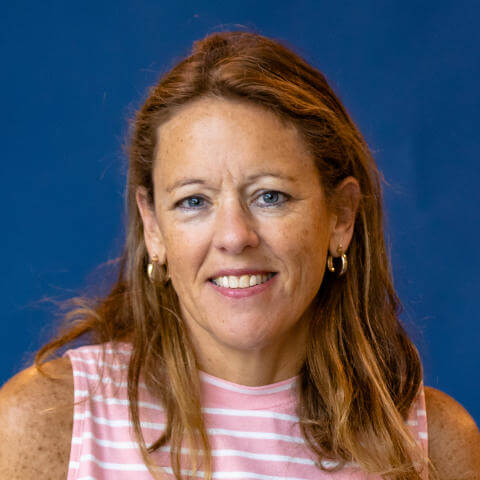
Long-time scuba diver, Anne Camp, reveals where the real dangers lurk.
In scuba diving, the most important rule is to never hold your breath. Even with the disorienting bubbles all around and every breath sounding like
Darth Vader, you must stay calm and breathe deep. For some people, a sense of isolation and claustrophobia sends them rushing with anxiety to the surface. But from my first dive at age 16, I absolutely loved being able to breathe underwater. It became a way for me to see beyond my diagnosis of Type 1 diabetes at an early age. For a long time, I had struggled, wondering, “Why did God give this to me?” Diving opened a whole new world.
I started to see how good and bad, light and dark lived side by side. Like when diving on a reef wall, to my left I might see the shallows brimming with beautiful stag corals, brain corals, sea anemones, and sea fans that offered protection to baby fish. The water shimmers with schools of yellow and black porkfish, silvery barracudas, and zebra-like spadefish. Yet on the other side of the reef is an eerie sheer, deep blue drop-off to thousands of feet below.
Diving into the unknown is not without its dangers. People often think immediately of sharks. But most sharks ignore and avoid divers. During an open- water dive, I spotted a great hammerhead swimming over me. He wasn’t as enthralled as I was with him and swam off. Instead, what I found was that sometimes the greatest danger comes in forms you don’t expect.
Over the course of my first summer diving, I was sexually abused by my 38-year-old scuba instructor, who was a mentor to me. When I finally told my parents, they confronted him, but he denied everything. Over the next few years, I tried to continue diving, but traumatic memories, dreams, and flashbacks turned my shame into a crippling depression. Even the smell of scuba gear made me feel panicked. I attempted suicide more than once. Before the abuse, I had wanted to be a marine biologist, but I gave up those career aspirations partly because I kept reliving the abuse. I stopped diving, finished school, and went on to become a neonatal intensive care nurse.
In 2008, still feeling broken well into my thirties, I went to Seacoast Church for the first time and felt welcomed and accepted. I joined a small group, got involved in missions, and became a long- term volunteer RN at the North Charleston Dream Center. But to really move forward, I knew I had to “dive” into a dark and murky place to learn to forgive the man who had abused me—to let go of the anger, shame, and guilt, after years of blaming myself. I had to come up for air many times and remove all the “cloudiness” from my mask... the sin, the bitterness, the victim mentality, so I could see the truth—how God saw me. Once I did this, the ocean called me back.
God has placed beauty here that you can find nowhere else. But you can only see it if you’re willing to go into the dark.
Diving became a haven for me again, giving me time away from humanity to explore life with a new sense of freedom. Even when waves were rolling on the surface, or it was pouring rain, it remained peaceful underwater. And the deeper I went, the more peaceful it got. I would let the air out of my buoyancy jacket and sink into the depths, into a different kind of quiet: listening to the faint sounds of parrotfish munching on coral with their beaks, the crackling of snapping shrimp, and simply the movement of the water. I found myself often praying and thanking God for all the calmness and beauty and thinking of Psalm 46:10. “Be still and know that I am God.”
Sometimes in reaching the ocean floor, all I saw was white sand. But if I really looked hard, I could find stingrays, flounder, and maybe even an octopus camouflaged in the sand. I realized that just because I couldn’t see God working in my life, didn’t mean he wasn’t.
Still, diving into deep waters can be scary. We don’t know what we’ll find. I’ve dived over shipwrecks like the British cargo ship, Thistlegorm, in the Red Sea, sunk in 1941 by German bombers. I’ve seen boots, jeeps, and other debris on the sea floor, and it was haunting. Swimming through the rooms of the shipwreck, I wondered: Who was on this ship? Were they scared? Were they praying? Were they right with God? It was the same sea, surrounded by red cliffs on both sides, that Moses parted in faith, believing that once he and the Israelites took those first steps into the water, they would cross unharmed. I wanted that kind of faith to step into the unknown.
I’ve found night dives to be a sort of physical way to stretch my faith. Although sometimes creepy, they are some of the most amazing ones I’ve done. When I turn off my flashlight, willing to face the darkness, suddenly I see thousands of tiny bioluminescent plankton sparkle and flash around me. God has placed beauty here that you can find nowhere else. But you can only see it if you’re willing to go into the dark.
Scuba diving has helped me find ways to forgive and find beauty in this life, in my family, and in my faith. In Key Largo, Florida, there is a 9-feet tall, underwater statue called, The Christ of the Abyss that stands in crystal blue water. Placed there in 1965, it shows Christ with his hands raised high. It reminds me that Christ is present everywhere, even in the deepest depths. No matter where I go, he is with me.

Follow us for up-to-date information